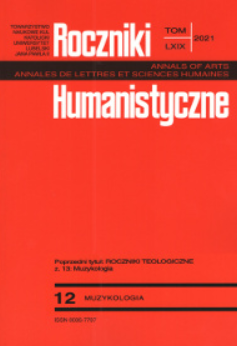IKONA NIEMIECKIEGO ORGELBEWEGUNG – ORGANY OŚRODKA JUGENDHOF HASSITZ W KŁODZKU-JURANDOWIE (GOSZYCACH)
THE ICON OF THE GERMAN ORGELBEWEGUNG: THE JUGENDHOF HASSITZ ORGAN IN KŁODZKO-JURANDÓW (GOSZYCE)
Author(s): Andrzej PrasałSubject(s): Cultural history, Music, History of Church(es), Local History / Microhistory, Interwar Period (1920 - 1939), WW II and following years (1940 - 1949)
Published by: Towarzystwo Naukowe KUL & Katolicki Uniwersytet Lubelski Jana Pawła II
Keywords: organ; Ver sacrum; Orgelbewegung; Kłodzko-Jurandów; Strzelce near Kutno;
Summary/Abstract: One of the first instruments that was produced in Silesia in the spirit of the Orgelbewegung was the organ of the Youth Leisure and Training Centre in Kłodzko-Jurandów. This centre, founded on the initiative of Richard Poppe, became a source of renewal for the Singbewegung in Eastern Germany. The instrument, called Ver sacrum (Sacred Spring), was meant to commemorate and remind everyone of all those who had sacrificed themselves and given their lives for their Fatherland (in particular, the fallen soldiers of the First World War). The organ was built in 1929 by the Sauer company from Frankfurt/ Oder (opus 1400). It had 27 stops (including 21 real stops), and pneumatic key and stop action with Taschenlade windchests. The organ disposition was designed by Christhard Mahrenholz, Ph.D., one of the leaders of the Orgelbewegung. Even though, musically, the instrument draws on the organ ideal from the Bach era, its mechanism perfectly reflects the achievements of organ construction of the twentieth century. In late 1945, the instrument was relocated to the Trinity parish church in Strzelce near Kutno.
Journal: Roczniki Humanistyczne
- Issue Year: 69/2021
- Issue No: 12
- Page Range: 141-152
- Page Count: 12
- Language: Polish

